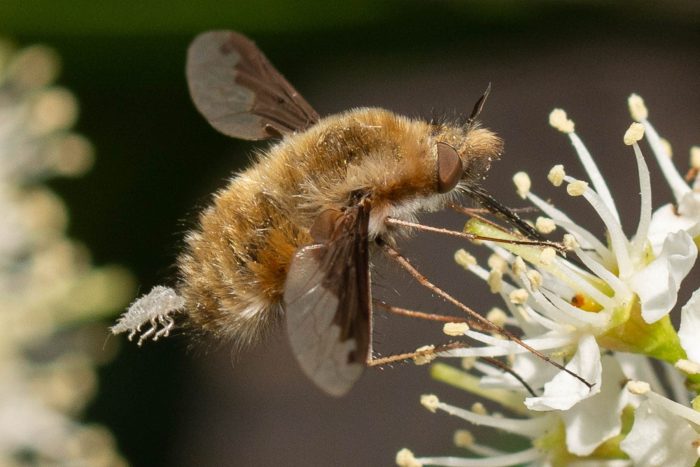Bee Fly
Bombylius spp.
The bee fly is a bee-mimic that lays its eggs in bee nests.
This section shows one large critter image at a time. Use the thumbnails that follow to select a specific image to display here.

This gallery contains a grid of small thumbnails. Selecting a thumbnail will change the main image in the preceding section.
Appearance
Bee flies resemble bumble bees with hairy bodies and long hairy legs, typically a light-brown and orange color. They have a long, slender tongue known as a proboscis. Like other flies, they have a single pair of wings and large, compound eyes.
Feeding
Bee flies hover right above flowers and use their long proboscis to sip nectar. They visit early spring flowers and other flowers that regular bees visit. Bee fly larvae feed on eggs and larvae from various bee species.
Predators
Birds and other insects are the most common predators.
Flight
Bee flies are agile fliers. They can hover in midair and change directions quickly to avoid predators.
Reproduction and life cycle
In the spring, bee flies lay their eggs inside underground bee nests. They hover low above the ground searching for bee nests; once they find an entrance, they drop their eggs inside the nest, using dust and fine sand to disguise the eggs. The bee fly larva enters the nest and feeds on pollen that has been stored for bee larvae. The bee fly larva will even eat the bee larvae and take over the nest until hatching the next spring.
Did you know?
Bee flies are among many flies that imitate bees.
There are a wide variety of bee flies in the Bombylius genus.
Bee flies are common throughout North America but are hard to find.
Sources and additional information
Bee Flies - U.S. Forest Service
Bee Flies – Family Bombyliidae - North American Insects and Spiders
Greater Bee Fly - iNaturalist
Greater Bee Fly- Maryland Biodiversity Project
